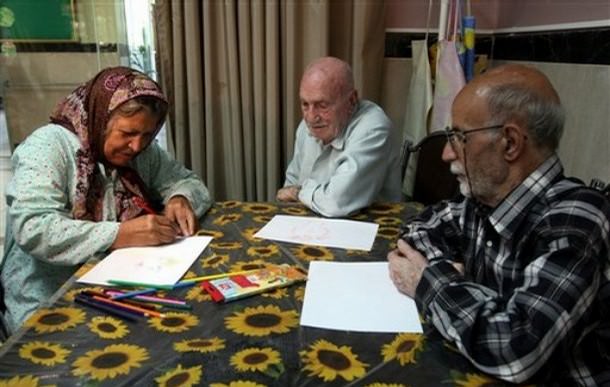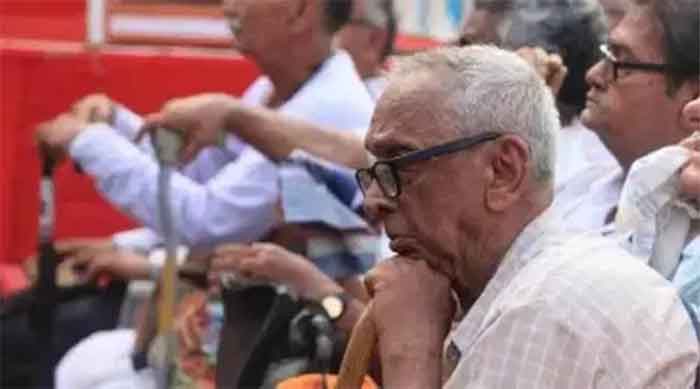
ABSTRACT
Today no one is talking of controlling population any more. Fertility rates are falling all over the world and many governments are encouraging births; giving monetary support and withdrawing free contraceptives and free vasectomy operations. The new problem is that of ageing. No one is prepared to talk of decreasing the longevity. Increasing longevity has long been a marker of good health care. It may have been before World War II, but today it is irrational prolonging of death which is increasing longevity, at the cost of quality of life and benefitting only the medico industrial complex. We suggest replacing expensive and irrational geriatric care with rational palliative care where old people live in comfort with reduced suffering and die peacefully at home with their family.
Let me begin with a long quote (slightly edited) from a recent article in The Guardian, which is an excellent summary of the situation today:
For many years it seemed that overpopulation was the looming crisis of our age. Back in 1968, the Stanford biologists Paul and Anne Ehrlich infamously predicted that millions would soon starve to death in their bestselling, doom-saying book The Population Bomb; since then, neo-Malthusian rumblings of imminent disaster have been a continual refrain in certain sections of the environmental movement. At the time the Ehrlichs were publishing their dark prophecies, the world was at its peak of population growth, which at that point was increasing at a rate of 2.1% a year. Since then, the global population has ballooned from 3.5 billion to 7.67 billion.
But growth has slowed – and considerably. As women’s empowerment advances and access to contraception improves, birthrates around the world are stuttering and stalling, and in many countries now there are fewer than 2.1 children per woman – the minimum level required to maintain a stable population.
Falling fertility rates have been a problem in the world’s wealthiest nations – notably in Japan and Germany – for some time. In South Korea last year, birthrates fell to 0.84 per woman, a record low despite extensive government efforts to promote childbearing. From next year, cash bonuses of 2m won (£1,320) will be paid to every couple expecting a child, on top of existing child benefit payments. The fertility rate is also falling dramatically in England and Wales – from 1.9 children per woman in 2012 to just 1.65 in 2019. The problem is even more severe in Scotland, where the rate has fallen from 1.67 in 2012 to 1.37 in 2019.
Increasingly this is also the case in middle-income countries too, including Thailand and Brazil. In Iran, a birthrate of 1.7 children per woman has alarmed the government; it recently announced that state clinics would no longer hand out contraceptives or offer vasectomies.
Thanks to this worldwide pattern of falling fertility levels, the UN now believes that we will see an end to population growth within decades – before the slide begins in earnest. An influential study published in the Lancet last year predicted that the global population would come to a peak much earlier than expected – reaching 9.73 billion in 2064 – before dropping to 8.79 billion by 2100. Falling birthrates, noted the authors, were likely to have significant “economic, social, environmental, and geopolitical consequences” around the world.
Their model predicted that 23 countries would see their populations more than halve before the end of this century, including Spain, Italy and Ukraine. China, where a controversial one-child per couple policy – brought in to slow spiraling population growth – only ended in 2016, is now also expected to experience massive population declines in the coming years, by an estimated 48% by 2100.
It’s growing ever clearer that we are looking at a future very different from the one we had been expecting – and a crisis of a different kind, as ageing populations place shrinking economies under ever greater strain.
What exactly is the Ageing Problem?
People above sixty years are considered old or senior citizens. It is the percentage of old people in the total population that is important and not the total number, and especially in relation to those in the 0-15 age group in the population. If we consider only total numbers then China and India will have the largest number of old people because of their high population. On the other hand as a proportion of the total population it is the Scandinavian countries, France and Japan that have very high percentage old people in their population. As the population of the old approaches that of the 0-15 group, the working population shrinks in proportion and the burden of taking care of the old and the young becomes very heavy. In such cases, societies experience a shortfall in its working population.
The population of the elderly rises because of a fall in fertility and not because of decrease in mortality and increase in life expectancy at birth. (Ansley J. Coale, ‘The Effects of Changes in Mortality and Fertility on Age Composition’, 1955). Reduction of mortality will definitely increase the total number of old people in the population. However, it is the fall in fertility that increases the proportion of old people in the population. A reduction in the number of new additions to the population increases the ratio of old people in the population, which as we said above is the real problem of old age for the society.
This is the ageing problem.
Old Age is a Human Phenomenon
Old age is a human phenomenon with all the complexity that entails one. In nature, that is, in plant and animal kingdom, there is no such comparable phenomenon. And contrary to popular understanding, among humans also it is relatively recent – starting roughly since mid 19th century when it became possible to control reproduction. The knowledge of controlling reproduction became popular in modern societies due to technology, which made the availability of these devices cheap and easy. Although the Catholic Church frowns upon it, it rapidly spread in the developed capitalist countries.
Prolonging Death
However, today old age is not healthy people naturally growing old. You may still see some such people, particularly those who used a bicycle all their life. Today by and large old people are from relatively affluent families. Majority of them are not in good health but are kept alive because of modern health care system. These old people and their families suffer a lot in terms of agonies, harassment of frequent hospitalisation and drain of money. The doctors have forgotten the wisdom of their seniors, like, ‘Any medical intervention is advised only if it improves the quality of life’. Today, saving life at any cost is the mantra. It would be alright if the patients were young but in the case of senior citizens the mantra should be reducing suffering.
Old Age Care
Historically, old people were cared for within the family. With the increase in their number and increase in wage employment, more and more old people are getting care through old age homes. The funding for this comes from the welfare state, charities and the pension of the old people themselves. However, these ‘homes’, of which there are not enough to take care of all the old people, suffer from many defects. To begin with, they are often inadequately furnished or maintained and lack adequate funds. Also, because old people are vulnerable, they are often exploited by the owners of these homes (or the individuals who run them) and the medical industrial complex.
Today, the burden of the care of the elderly on the government is so big that it often exceeds the pay check of the working people. In Kerala, for instance, the pension of government employees is more than the current wages of the employees. As a result, today’s governments desperately want to get out of it.
The fact is, care of old people is rapidly becoming an unsolvable problem, and only more so in the coming resource crunch due to peaking of non renewable resource and economic crisis.
Palliative Care
In such a situation Palliative Care offers a viable solution. Although it has evolved mainly for terminal illnesses like cancer, it has been used for normal care for old people also.
The state of Kerala has managed to develop an integrated health service delivery model with community participation in palliative care. Institute of Palliative Medicine, Thiruvananthapuram, has been playing a major role in shaping up this model. The evolving palliative care system in Kerala tries to address the problems of the incurably ill, bedridden and dying patients irrespective of the diagnosis, age or social class. The program in Kerala is also expanding to areas like community psychiatry and social rehabilitation of the chronically ill. Palliative care has been declared by Government of Kerala as part of primary health care. Combined efforts by Civil Society Organisations, Local Self Government and Government of Kerala have resulted in the best coverage anywhere in Low and Middle Countries for palliative care. The ‘Quality of Death’ study by Economist Intelligence Unit (2010) states that “Amid the lamentably poor access to palliative care across India, the state of Kerala stands out as a beacon of hope. While India ranks at the bottom of the Index in overall score, and performs badly on many indicators, Kerala, if measured on the same points, would buck the trend. With only 3% of India’s population, the tiny state provides two-thirds of India’s palliative care services.
Palliative care is a relatively basic and relatively cheap healthcare provision. It requires simple facilities and by most healthcare standards basic nursing and medical care. With the present economic crisis and resource crunch, expensive and irrational geriatric health care should come down and be replaced by palliative care wherever possible. It will enable old people live in comfort with reduced suffering and die peacefully at home with their family. And in the end it will reduce the carbon foot print of the old people and reduce the population to manageable levels.
T. Vijayendra (1943 – ) was born in Mysore, grew up in Indore and went to IIT Kharagpur to get a B. Tech. in Electronics (1966). After a year’s stint at the Saha Institute of Nuclear Physics, Kolkata, he got drawn into the whirlwind times of the late 60s.
Since then, he has always been some kind of political-social activist. His brief for himself is the education of Left wing cadres and so he almost exclusively publishes in the Left wing journal Frontier, published from Kolkata. For the last ten years, he has been active in the field of ‘Peak Oil’ and is a founder member of Peak Oil India and Ecologise. Since 2015 he has been involved in Ecologise! Camps and in 2016 he initiated Ecologise Hyderabad. He divides his time between an organic farm at the foothills of Western Ghats, watching birds, writing fiction and Hyderabad. Vijayendra has been a ‘dedicated’ cyclist all his life, meaning, he neither took a driving license nor did he ever drive a fossil fuel-based vehicle.
He has published a book dealing with resource depletion, three books of essays, two collections of short stories, a novella, an autobiography, a piece of children’s science fiction about the history of the bicycle and several booklets. His booklet, Kabira Khada Bazar Mein: Call for Local Action in the Wake of Global Emergency (2019, https://archive.org/details/kabira-khada-bazaar-mein) has been translated into Kannada, Bengali and Marathi and is the basic text for the emerging Transition Networks in these language regions. His latest book is ‘Vijutopias: Dreams for Local Futures (2020).
IF YOU LIKED THE ARTICLE SUPPORT PEOPLE’S JOURNALISM












































